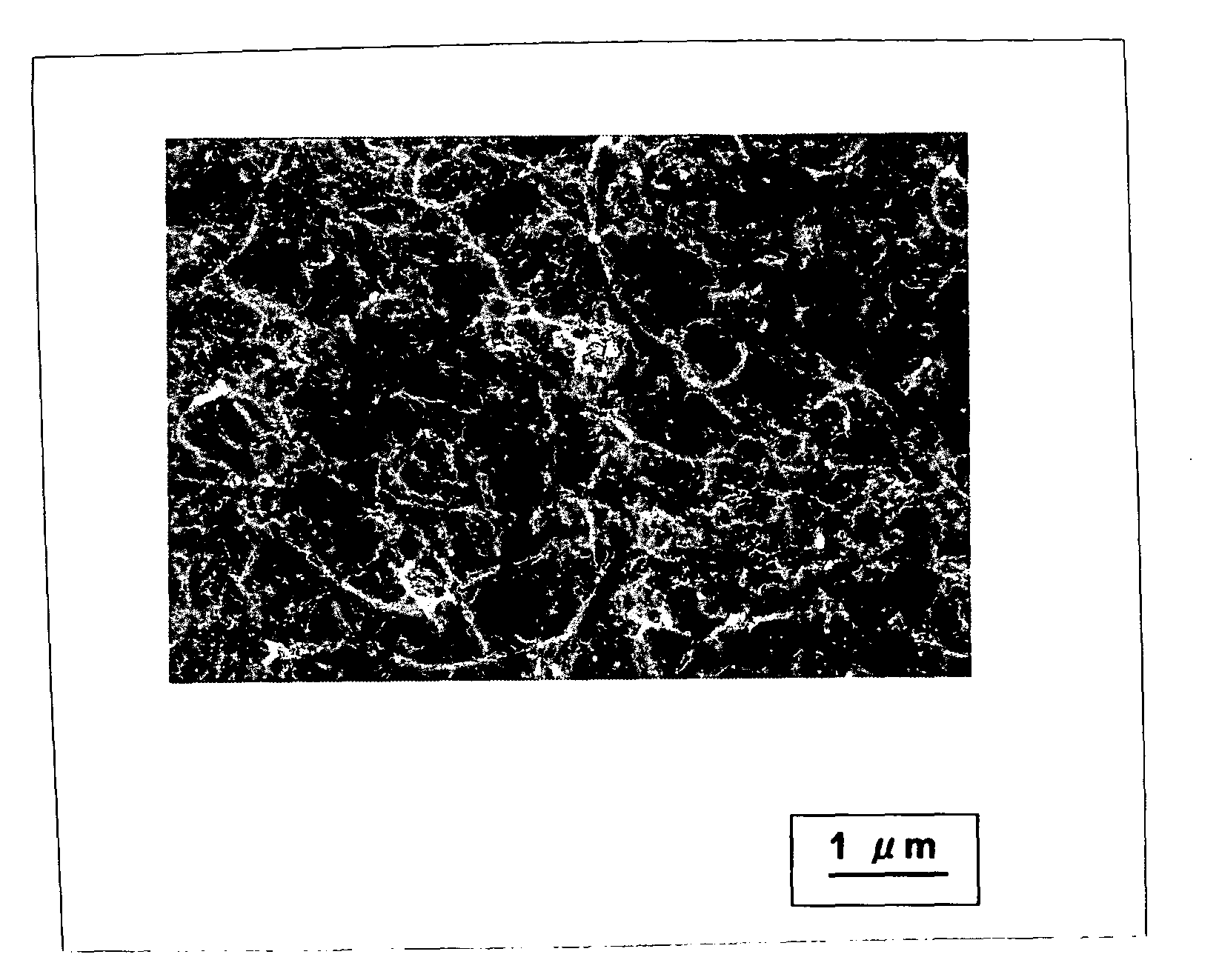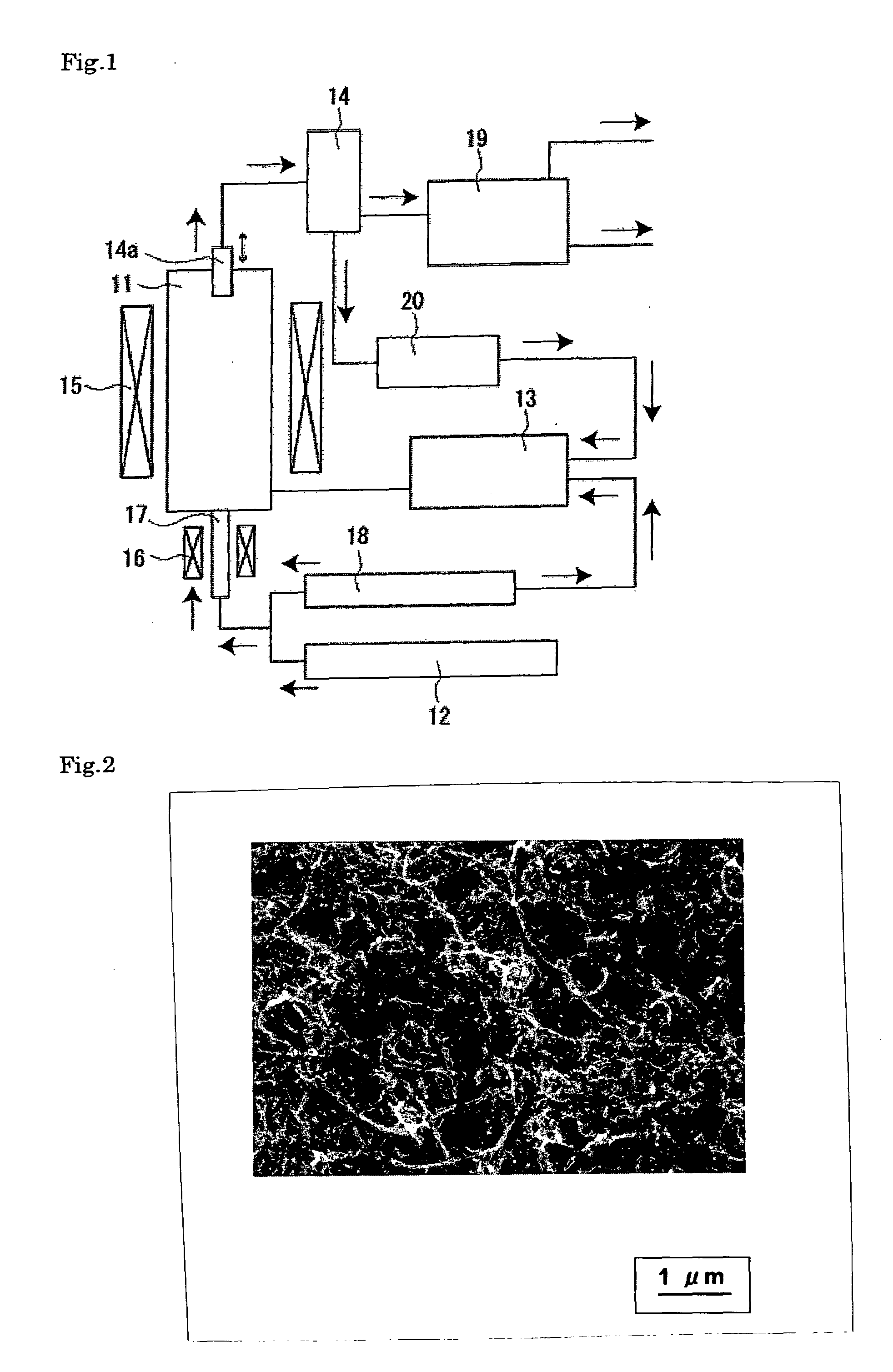Process for producing carbon nanomaterial and system for producing carbon nanomaterial
- Summary
- Abstract
- Description
- Claims
- Application Information
AI Technical Summary
Benefits of technology
Problems solved by technology
Method used
Image
Examples
example 1
[0067]A reactor (diameter: 480 mm; length: 1,440 mm) of a fluidized bed reaction apparatus was charged with 720 g of the supported catalyst prepared above and 3,600 g of previously produced carbon nanotubes (diameter: 13 nm; length: 1.3 μm) as the fluidizing material by pneumatic transfer. Immediately thereafter, while feeding a fluidizing gas (hydrogen; flow rate: 216 L / min) and a carbon raw material (ethylene; flow rate: 216 L / min), the reaction was performed at 550° C. for 30 min in a fluidized state. The blending proportion of the carbon nanotubes ((carbon nanotubes) / (carbon nanotubes+supported catalyst)) was 0.83 and the volume ratio of the hydrogen fed to the ethylene fed (C2H4 / H2) was 1.
[0068]After completion of the reaction, the reaction gas being fed was changed to a nitrogen gas being fed at a rate of 216 L / min to cool the reactor. Carbon nanotubes thus produced were recovered using a recovering pipe mounted to the apparatus so as to be moveable up and down in the vertical...
examples 2 and 3
[0069]The reaction was carried out in the same manner as that in EXAMPLE 1 except that the blending proportion of the carbon nanotubes as the fluidizing material used in EXAMPLE 1 was changed as shown in Table 1 below, and the content of impurities therein was measured. The results are shown in Table 1 below.
TABLE 1EXAMPLEEXAMPLEEXAMPLE123Blending proportion of carbon 836776nanotubes (% by mass)Impurity content in carbon2.52.62.5nanotubes (% by mass)
example 4
[0072]A reactor (diameter: 480 mm; length: 1,440 mm) of a fluidized bed reaction apparatus was charged with 720 g of the supported catalyst prepared above and 3,600 g of previously produced carbon nanotubes as a fluidizing material by pneumatic transfer. Immediately thereafter, while feeding a fluidizing gas (hydrogen; flow rate: 216 L / min) and a carbon raw material (ethylene; flow rate: 216 L / min), the reaction was performed at 550° C. for 30 min in a fluidized state. Three kinds of carbon nanotubes (referred to as Materials 1, 2 and 3) having different aspect ratios as shown in Table 2 below were used. The catalyst was charged so that the product obtained after completion of the reaction had the same properties as those of the fluidizing material. The blending proportion of the carbon nanotubes ((carbon nanotubes) / (carbon nanotubes+supported catalyst)) was 0.83 and the volume ratio of the hydrogen fed to the ethylene fed (C2H4 / H2) was 1.
[0073]After completion of each of the reacti...
PUM
 Login to View More
Login to View More Abstract
Description
Claims
Application Information
 Login to View More
Login to View More - R&D
- Intellectual Property
- Life Sciences
- Materials
- Tech Scout
- Unparalleled Data Quality
- Higher Quality Content
- 60% Fewer Hallucinations
Browse by: Latest US Patents, China's latest patents, Technical Efficacy Thesaurus, Application Domain, Technology Topic, Popular Technical Reports.
© 2025 PatSnap. All rights reserved.Legal|Privacy policy|Modern Slavery Act Transparency Statement|Sitemap|About US| Contact US: help@patsnap.com


